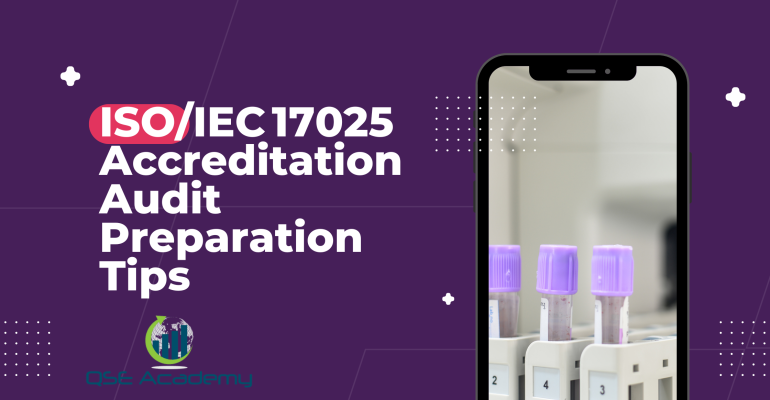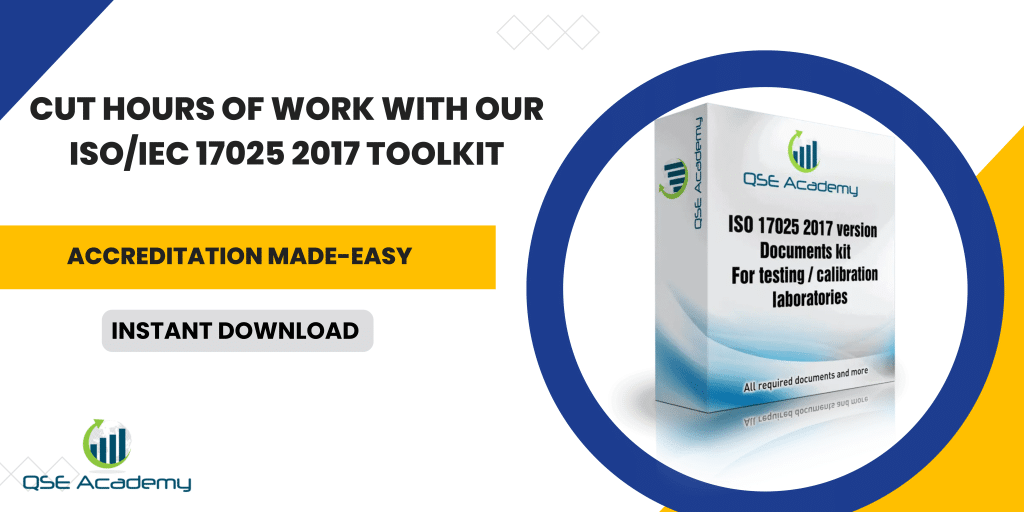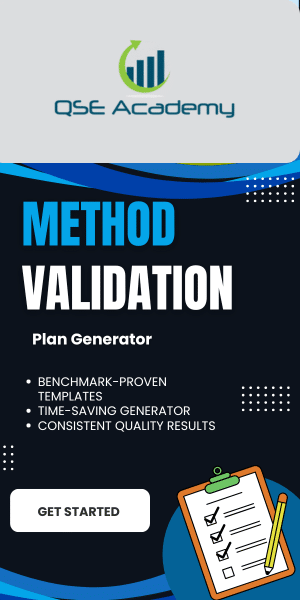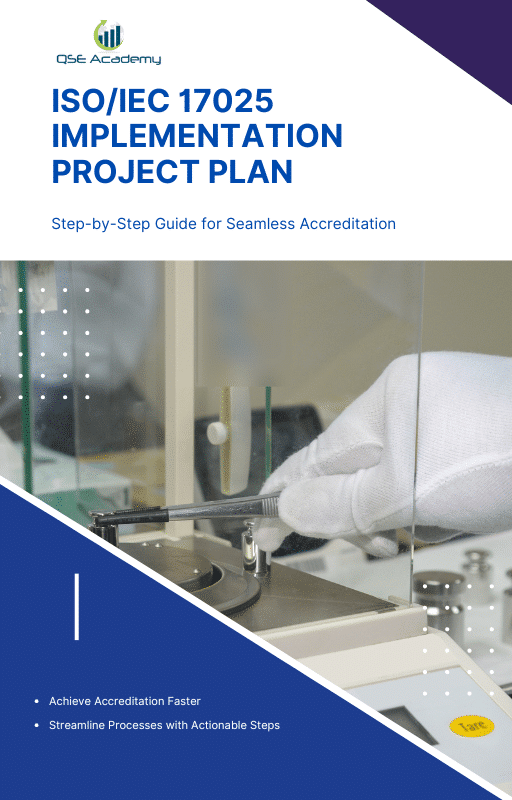ISO/IEC 17025 Accreditation Audit Preparation Tips
Last Updated on October 13, 2025 by Melissa Lazaro
Turning Audit Anxiety into Audit Confidence
If you’ve ever lost sleep before an accreditation audit, you’re in good company. I’ve worked with dozens of lab managers who said the same thing: “We know we’re compliant… but we’re still nervous.”
And I get it. ISO/IEC 17025 accreditation audits can feel intimidating — especially when assessors are combing through every record, calibration certificate, and conversation. But here’s the truth: it doesn’t have to be stressful.
In my experience helping labs across testing, calibration, and inspection fields, the difference between a panicked audit and a confident one comes down to preparation — not perfection. Labs that plan ahead, know their weak spots, and involve their teams always perform better, even when surprises come up.
This guide walks you through the practical side of audit readiness:
-
What assessors really look for (and what they don’t).
-
How to organize your documentation so nothing gets lost in the shuffle.
-
How to prepare your team to answer questions naturally and confidently.
-
And a few battle-tested tips to help you turn audit day into a showcase of competence, not chaos.
By the end, you’ll know exactly how to walk into your next ISO/IEC 17025 audit with calm, clarity, and a checklist that actually works.
Understand What the Accreditation Audit Really Tests
Here’s something many labs misunderstand — an ISO/IEC 17025 accreditation audit isn’t designed to catch you out. It’s designed to prove competence and consistency. Assessors aren’t looking for perfection; they’re looking for evidence that your lab does what it says, every time, in every test or calibration.
When I walk clients through audit prep, I always start by reframing their mindset. This isn’t about passing or failing — it’s about demonstrating confidence through evidence.
What the Audit Actually Looks At
An accreditation audit generally has two stages:
-
Document Review – Assessors evaluate your quality manual, procedures, and records to ensure they align with ISO/IEC 17025 clauses.
-
On-Site Assessment – They visit your lab, talk to your staff, observe tests or calibrations, and verify that what’s written is actually happening.
Every question or observation links back to one of three big ideas:
-
Competence — Are people trained and qualified to do the work?
-
Consistency — Is the method followed the same way each time?
-
Impartiality — Are results free from bias or outside influence?
If you can show evidence for those three, you’re already halfway to a smooth audit.
Pro Tip: Think Like an Assessor
Before your audit, practice the “show me” mindset.
If your SOP says, “Balances are verified daily,” don’t just point to the procedure — show the verification record.
If your method says “Samples are logged upon receipt,” pull up the latest log and walk through the process.
Auditors love seeing systems in action, not just documents in binders.
Common Pitfall: Paper Compliance vs. Process Reality
I’ve seen labs with flawless documentation but weak implementation.
One testing lab I worked with had beautiful SOPs and training matrices — yet during the audit, a technician admitted they hadn’t done a refresher training in over a year. That mismatch cost them a major nonconformity.
Lesson: The audit doesn’t test how pretty your paperwork looks; it tests how faithfully your system lives in daily work.
Build Your Pre-Audit Preparation Plan (Step-by-Step)
If there’s one thing I’ve learned from years of guiding labs toward ISO/IEC 17025 accreditation, it’s this: panic happens when preparation doesn’t.
The labs that breeze through assessments aren’t perfect—they’re organized, realistic, and proactive.
So, let’s map out a pre-audit game plan that actually works.
Step 1: Review Your Past Internal Audit and Corrective Actions
Before you look ahead, look back.
Start with your most recent internal audit and any corrective-action logs. These are goldmines for spotting patterns—repeat findings, half-closed actions, or improvement ideas you never implemented.
Pro Tip: Highlight any item that says “To be verified next audit.” Assessors will ask about those.
Step 2: Verify Competence and Calibration Records
Auditors will always check training and calibration first—it’s where most nonconformities live.
Make sure every staff member’s competence record is current and each piece of critical equipment has a valid calibration certificate.
I once helped a calibration lab discover that one pressure gauge hadn’t been calibrated in 18 months—it was an easy fix before the audit, but would’ve been a big hit if found later.
Step 3: Update Method Validations and Uncertainty Calculations
If your methods have changed, or if you’ve replaced equipment, your validation and uncertainty data should reflect that.
Assessors will check that your technical records still match your current setup.
Common Pitfall: Forgetting to re-validate after software or hardware upgrades. It’s a small step that can cause major issues if missed.
Step 4: Perform a Mock Audit or Dry Run
Think of it as your dress rehearsal.
Use your internal-audit checklist and walk through the process exactly as an assessor would. Have someone independent observe, ask questions, and take notes.
Pro Tip: Time it. A two-hour mock audit reveals if your documentation is easy to find—or buried in folders you’ll struggle to open under pressure.
Step 5: Communicate and Assign Responsibilities
Preparation isn’t a one-person show.
Meet with your team, set clear expectations, and assign owners for each key area—quality, technical, equipment, and administration.
One lab I coached used a simple wall chart showing who’s handling what before audit day. Everyone saw progress at a glance—and no one was caught off guard when the assessor asked questions.
Organize Your Documents and Records for Easy Access
Here’s a truth every lab learns the hard way: during an audit, how fast you find a document often matters as much as what’s in it.
I’ve watched experienced quality managers freeze mid-audit—not because they were missing records, but because they couldn’t locate them under pressure.
Let’s fix that before it happens to you.
Build a Clear, Logical Structure
Start with a simple hierarchy that mirrors your quality system.
Most labs use this flow:
-
Quality Manual – The big picture; your policy framework.
-
Procedures (SOPs) – How things are done day-to-day.
-
Work Instructions – Detailed, step-by-step guides.
-
Records – Proof that the system’s being followed.
Whether you use a shared drive, document-control software, or binders, the structure should be intuitive. If it takes more than 10 seconds to explain where to find something, simplify it.
Pro Tip: Label folders and files by ISO/IEC 17025 clause number. It helps both you and the assessor trace compliance instantly.
Digitize Where Possible
Paper systems can work—but they’re risky. Pages go missing, signatures fade, and version control becomes a nightmare.
A good electronic document-control system changes that. You can track revisions, restrict editing rights, and retrieve records in seconds.
One of my clients implemented a simple cloud-based setup just three months before their accreditation audit. When the assessor asked for five random calibration certificates, they found all five in under a minute. It made a strong impression.
Common Pitfall: Over-organizing. Some labs panic and rename or move everything right before an audit—only to lose traceability. Never reorganize your file structure in the same month as your audit.
Know What Assessors Ask for Most
You don’t need to guess. After years of doing this, I can tell you the top five items assessors usually request:
-
Training and competence records for all technical staff.
-
Calibration certificates for reference standards and critical instruments.
-
Proficiency testing results and trend analysis.
-
Internal audit and management-review reports.
-
Corrective-action logs with evidence of closure.
Have those ready to open—ideally, bookmarked or tagged.
Pro Tip: Keep a “Quick Access” Folder
Create one folder (digital or physical) labeled “Audit Essentials.” Store the most requested documents there: your quality policy, scope, organizational chart, and key procedures.
It gives you peace of mind—and shows the assessor your lab runs efficiently.
Prepare Your Team — Because Auditors Talk to People, Not Just Paper
Here’s something I always remind clients before audit day: the assessor isn’t auditing your documents; they’re auditing your people through your documents.
You can have the most beautiful quality manual in the world, but if your staff freeze or give inconsistent answers, that confidence evaporates fast.
Your people are your strongest evidence of competence—if they’re ready.
Start with a Team Briefing
A week or two before the audit, gather everyone for a short, focused meeting. Explain the audit process, what assessors usually ask, and what’s expected from each role.
This isn’t about scripting responses—it’s about building comfort and clarity.
When everyone understands that an audit is a conversation, not an interrogation, the tone of the entire assessment shifts.
Pro Tip: Walk the team through the schedule—who’s being interviewed, what areas will be observed, and when breaks happen. Predictability reduces anxiety.
Coach for Understanding, Not Memorization
Assessors can tell when answers are rehearsed. Instead of drilling staff to memorize clauses, help them connect questions to their actual work.
Here’s an example:
Instead of teaching, “Clause 6.2 is about competence,”
ask, “If the assessor asks how you were trained to perform this test, what could you show them?”
They might respond, “My training log, the competency checklist, and the supervisor’s approval form.”
That’s a confident, authentic answer—the kind assessors love.
Run a Mini Q&A Session
A day or two before the audit, run a short simulation. Ask realistic questions like:
-
“Show me how you ensure your balance is within calibration.”
-
“How do you record deviations during testing?”
-
“Where do you find the latest version of your SOP?”
You’ll immediately spot who’s unsure—and have time to clarify before the real thing.
Pro Tip: Let staff practice pulling up documents or walking to the record location. It’s amazing how muscle memory reduces stress on the day itself.
Common Pitfall: Shielding Staff from Auditors
Some managers try to handle every question themselves to protect their team. It usually backfires.
Assessors expect to speak directly to the people performing the work. When technicians confidently explain their process, it’s the best proof of competence you can give.
Example:
A calibration technician once told an assessor, “I check the gauge zero every morning before starting, and if it’s off, I log it here.” He didn’t quote a clause—he showed understanding. That’s what earns trust.
Handle Nonconformities and Observations Smartly
Every lab—no matter how experienced—gets findings during an accreditation audit. That’s normal. What separates strong labs from struggling ones is how they respond.
In my experience, the best labs don’t fear nonconformities—they use them to sharpen their systems.
Let’s break down how to handle them like a pro.
Understand What’s What: Major vs. Minor vs. Observation
Major Nonconformity: A serious issue that directly affects the validity of results or undermines the system (e.g., uncalibrated equipment used for testing).
Minor Nonconformity: A smaller gap, like a missing signature or an outdated reference in an SOP.
Observation or Opportunity for Improvement: Not a nonconformity, but a suggestion from the assessor that could strengthen your system.
Pro Tip: Don’t panic when you hear “nonconformity.” Auditors are required to report any deviation—big or small. It doesn’t mean failure; it means improvement opportunity.
Step 1: Acknowledge, Don’t Argue
When an assessor points out a finding, resist the urge to defend or explain immediately.
I’ve seen quality managers talk themselves into a deeper hole by over-justifying.
Instead, take a breath, listen carefully, and confirm your understanding. You can always clarify or submit additional evidence later.
Phrase to use:
“Thank you for pointing that out. We’ll review it and provide objective evidence if available.”
It sounds professional and shows cooperation—something assessors note positively.
Step 2: Investigate and Identify the Root Cause
Once the audit ends, review each finding with your team. Don’t rush to fix it—first, understand why it happened.
Ask the classic root-cause questions:
-
What failed?
-
Why did it fail?
-
Why wasn’t it detected earlier?
Example:
Finding: “Calibration certificate expired.”
Root cause: “No automated tracking for calibration due dates.”
Action: “Implement electronic reminders.”
Now your corrective action solves the system, not just the symptom.
Step 3: Take Corrective Action and Verify It Works
Auditors appreciate structured, documented responses. Follow this flow:
-
Describe the nonconformity.
-
Identify the root cause.
-
State the corrective action.
-
Provide evidence of implementation.
-
Verify effectiveness.
A lab I worked with reduced repeat findings by 80% simply by adding one step—verification after 30 days. It proved their fixes were working long-term.
Pro Tip: Always link corrective actions to the related ISO/IEC 17025 clause. It makes follow-ups clean and traceable.
Step 4: Treat Observations as Free Consulting
Assessors’ observations are hidden gems. They’re usually drawn from experience with dozens of other labs. Even if they’re not mandatory, consider implementing the good ones.
Example:
Observation: “Consider adding uncertainty values to calibration certificates for transparency.”
The lab adopted it—and clients immediately noticed the improvement.
Common Pitfall: Closing Findings Too Quickly
Rushing to mark a nonconformity as “closed” without verifying effectiveness is a common mistake. It looks good on paper but collapses during the next audit.
Always give changes time to prove themselves. If you introduced a new log or procedure, check after a few weeks—are people using it consistently?
Post-Audit Follow-Up – What to Do After the Assessors Leave
When the assessors pack up and leave, most labs exhale in relief. I get it — the hardest part feels over.
But here’s what I tell every client: the real value of an audit shows up in what you do next.
The post-audit phase is where lessons turn into improvement — and where accreditation bodies see whether your lab truly lives ISO/IEC 17025.
1. Review the Audit Report as a Team
Don’t keep the report locked in the quality manager’s inbox.
Gather your key people — quality, technical, and admin — and walk through every finding together.
Ask:
-
What’s the root cause?
-
Who owns this process?
-
What evidence do we already have?
This keeps accountability visible and prevents the “someone else will fix it” trap.
Pro Tip: Highlight findings that connect across multiple departments. For instance, one “training record” issue might also touch HR, quality, and supervision. Solve it once, and you’ll improve three systems at once.
2. Assign Owners and Deadlines for Corrective Actions
The longer findings sit idle, the harder they are to fix.
Create a simple corrective-action tracker with four columns:
| Finding | Responsible Person | Due Date | Status |
Color-coding helps: red (open), yellow (in progress), green (closed).
It’s not fancy, but it keeps everyone aligned and makes follow-up effortless.
Example:
A testing lab I supported implemented a shared tracker on Teams. Everyone could see progress in real time, and their next surveillance audit had zero repeat findings.
3. Submit Objective Evidence Thoughtfully
If your accreditation body requires documented proof of corrective action, take time to present it clearly.
Don’t just send a screenshot or a signed form — explain how the action fixed the issue.
Better:
“Calibration due-date reminders added in equipment-tracking software. Logs show all instruments verified within schedule for past 60 days.”
Assessors appreciate concise, evidence-based responses.
4. Verify Effectiveness Before You Move On
Don’t confuse “implemented” with “effective.”
After 30 to 60 days, revisit each fix to confirm it’s truly working.
If the same issue pops up again, that’s a sign your root cause wasn’t deep enough.
Pro Tip: Treat this verification like a mini internal audit. Ask the same questions the assessor asked — if you’d be satisfied with the answer now, you’ve closed it properly.
5. Feed It Into Your Management Review
Every finding, corrective action, and lesson learned should flow into your next management review.
This step shows your system isn’t static — it evolves.
One client of mine started adding a short “Audit Learnings” section to every management-review meeting. Within a year, their reports became stronger, their metrics clearer, and their audit prep time was cut in half.
Common Pitfall: Treating the Audit as a One-Off Event
ISO/IEC 17025 isn’t about passing one audit — it’s about maintaining a consistent rhythm of quality.
The best labs I’ve worked with don’t “gear up” for audits anymore. They just stay ready.
Every record, every calibration, every discussion becomes part of their ongoing proof of competence.
Audit Readiness Is Built, Not Rushed
Every great ISO/IEC 17025 audit I’ve witnessed had one thing in common — the lab didn’t “cram” for it.
They didn’t scramble to update SOPs the night before or dig through archives to find calibration certificates. Instead, they treated audit readiness as part of daily operations — a habit, not a project.
That’s what true competence looks like.
Here’s the Big Picture
If your systems are active, your people are engaged, and your records tell the truth, the audit becomes just another conversation about your work — not a stress test of your credibility.
Let’s recap the essentials that keep your lab ahead:
-
Know what the audit tests: competence, consistency, impartiality.
-
Build a prep plan early: use internal audits as rehearsal, not reaction.
-
Keep documents accessible: every record should have a clear home.
-
Train your team to speak confidently: understanding beats memorization every time.
-
Handle findings with maturity: treat nonconformities as opportunities, not failures.
-
Follow up and close out effectively: improvement is your best audit evidence.
When those pieces come together, assessors see it immediately — a culture of control, learning, and pride in the work.
Final Thought
After helping countless labs achieve and maintain ISO/IEC 17025 accreditation, I can tell you this:
Audit readiness isn’t built in the weeks before assessment — it’s built in the way you manage your lab every single day.
If you’ve read this far, you already care about getting it right — and that’s half the battle.
Now it’s time to take the next step.
Download QSE Academy’s ISO/IEC 17025 Audit Preparation Checklist to guide your next audit cycle, or book a consultation if you’d rather have an expert walk your team through the process.
Because when you build readiness into your routine, the audit stops being something to fear — and becomes something to be proud of.
I hold a Master’s degree in Quality Management, and I’ve built my career specializing in the ISO/IEC 17000 series standards, including ISO/IEC 17025, ISO 15189, ISO/IEC 17020, and ISO/IEC 17065. My background includes hands-on experience in accreditation preparation, documentation development, and internal auditing for laboratories and certification bodies. I’ve worked closely with teams in testing, calibration, inspection, and medical laboratories, helping them achieve and maintain compliance with international accreditation requirements. I’ve also received professional training in internal audits for ISO/IEC 17025 and ISO 15189, with practical involvement in managing nonconformities, improving quality systems, and aligning operations with standard requirements. At QSE Academy, I contribute technical content that turns complex accreditation standards into practical, step-by-step guidance for labs and assessors around the world. I’m passionate about supporting quality-driven organizations and making the path to accreditation clear, structured, and achievable.












